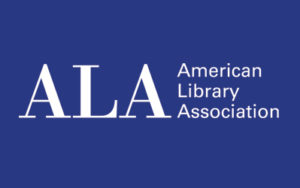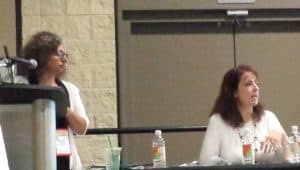
The days when special collections and archives were hidden away from the public in antiquated rooms or sections of the library are gone. Special collections now require special architectural design. And many libraries are rethinking how they present these collections to create vibrant spaces that engage patrons and allow for full appreciation of the works.
Representatives from three university libraries gathered June 25 for the Library Leadership and Management Association–sponsored panel discussion “Front and Center: Designing for Special Collections and Archives in the Library” at the 2016 ALA Annual Conference and Exhibition in Orlando, Florida, to showcase new special collections libraries that buck the outdated model and look to the future.
Moderated by Karen Fairbanks from Marble Fairbanks Architects in Brooklyn, the panel began with a discussion of big ideas vital to special collections design, including the importance of extending the impact of the collection and thinking of new ways to advance new pairings of collections. She also stressed that libraries must always tell a collection’s story with its presentation, stay involved with the architectural project through its completion, and always mock-up every design idea twice to ensure that what they’re doing really works.
Each of the three libraries underwent massive renovations, and themes ran through all of the projects: a desire to connect the past to the present while staying true to a university’s heritage, and creating open, unrestricted spaces that encourage student and faculty participation.
Naomi Nelson, associate university librarian and director at the David M. Rubenstein Rare Book and Manuscript Library at Duke University in Durham, North Carolina, discussed the recent renovation of the Rubenstein Library. The project transformed the interior of the building—much of which had not been updated since its construction in 1928—into a modern space with open sightlines from room to room that encourage student engagement with the collection and scholarship. “Being able to see into the rooms demystifies the research process for undergrads,” she said. “We wanted to bring down the walls.”
Gensler architect Ross Conway followed Nelson with a presentation of the firm’s redesign of the Kislak Center for Special Collection, Rare Books, and Manuscripts at the University of Pennsylvania in Philadelphia. The project posed many challenges, according to Conway, from reimagining the center’s stuffy, inclusive space to the difficult task of helping the library secure funding for the project. Conway shared sketches that detailed the evolution of Gensler’s vision and design. These same sketches became fundraising set pieces that were presented to potential donors whose funding of the library increased as the scope of the new library was eventually realized. The completed project transformed the library into an open, sleek, modern facility that showcases the collections and fosters research while also serving the university community as an event and gathering space.
Like Duke’s Rubenstein Library, the Stuart A. Rose Manuscript Archives, and Rare Book Library at Emory University in Decatur, Georgia, had not been renovated since the 1920s. Charles Forrest, who retired as director of library facilities at Emory, and Jennifer Meehan, associate director of Rose Library, detailed a recent project that updated the library for the modern era. Cramped reading rooms and otherwise closed quarters were deconstructed and rebuilt to emphasize openness and transparency, with clear glass walls maximizing the effect.
The use of glass walls to create a sense of openness was a constant feature throughout all the projects, prompting an audience member to ask if the abundance of glass surfaces requires extra cleaning teams. Meehan noted an uptick in glass smudged with nose prints at Rose Library but laughed that it wasn’t a dire issue—the library had plenty of aides to clean windows.


